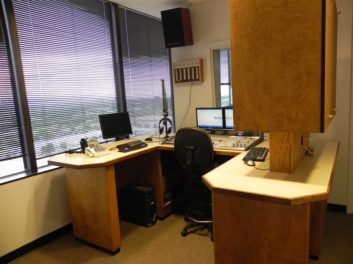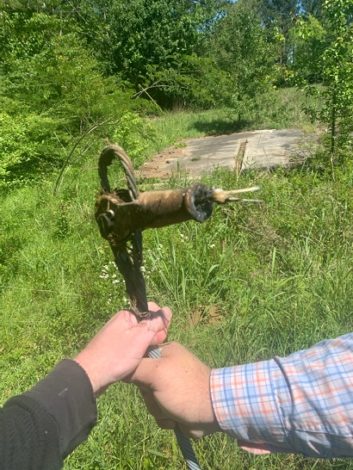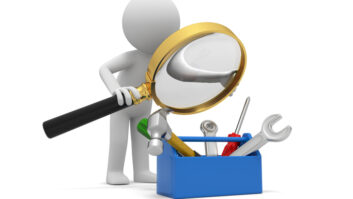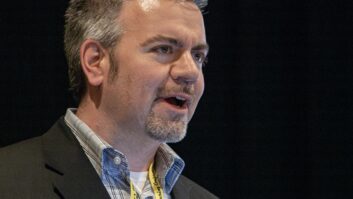Wow. What huge changes we have seen in just a few short months, and not just in our industry or nation, but the entire world!
My guess is that for most readers, as it has been for me, the past 2-1/2 months have been sort of surreal, almost like some kind of sensory deprivation because we have lost so many of our points of reference. During the height of the lockdown, much of the time, I would find I had lost track of what day of the week it was and even the date. Things all sort of ran together. It’s getting better now that things are beginning to open up, but it’s still weird.

I’ve heard it said, usually by pols and pundits, “Never let a good crisis go to waste.” In the political sense, there is in my view some shame in that kind of attitude. But out here in the real world, there is some wisdom.
Restated in a more positive way, “Don’t fail to learn some things from this crisis.” And we haven’t. We have, in fact, learned a great deal, and I think that is going to change our industry — hopefully for the better — going forward. So what have we learned?
NECESSARY SIMPLIFICATION
At the top of my list is, we have learned what is truly important and what is not. That goes for equipment, processes, procedures, even the programming we broadcast.
A time of crisis, whether the COVID-19 lockdown, a terrorist attack, a hurricane or some other natural disaster or some other national, regional or local crisis, forces us to make decisions as to what is essential and what we can live without. It distills what is otherwise very likely a rather cluttered situation into the essence of what we actually need, and that’s a good thing. It’s so easy to get lost in the minutia in our workaday world.
Any broadcast engineer who has been through a crisis, especially one that has physically impacted the station’s facilities or infrastructure, knows what I’m talking about here. Boil it all down and it takes very little to be on the air: a microphone, some sort of mixer, some sort of playout device (even a laptop computer with Groove or Media Player), an audio processor, an exciter, an RF amplifier, transmission line and antenna supported on something with some elevation.
While the instant crisis has not, in most cases, affected facilities or infrastructure, it has forced broadcasters to do a whole lot more with a whole lot less, quite often by VNC, TeamViewer or other remote desktop software, using VPNs and other tunnels across the public internet.

In many of the clusters in my company, stations operated for a month or more using virtual mixers on such platforms, even doing live talk with hosts and guests at their homes connecting to the (unmanned) studios with remote codecs or smartphone apps that talk to our studio codecs — and it worked very well! The quality was so good that listeners were hard pressed to know the difference.
GOOD SPORTS, MOSTLY
I have watched, at first with some amusement but then with growing irritation, our local television outlets doing essentially the same thing, with anchors, reporters and weather people doing their thing from their “home studios.” Except for the acoustics, which were often hollow and echoey, the quality was acceptable, but the delay was really irritating.
As a broadcast engineer, I get it — there are encoding, transmission and decoding delays that have to be lived with in both directions, and those add up to several seconds of the on-camera person staring at the camera and nodding long after the other person has quit talking.
Thankfully, in radio, unless we are dealing with a bidirectional satellite link with its space-segment transmission delays in each direction, the amount of latency or delay in our codecs is short enough that listeners don’t notice it. That gives radio a real leg up on other segments of the industry.
Except for the largest operations with their separate IT departments, broadcast engineers have been tasked to equip station staffers to work from home. This includes operations people of course, but also managers, account executives, office managers, traffic people, administrative personnel, writers and producers. Some operations were, to some degree, already set up for this, but in a lot of cases, engineers had to scramble to get things configured and people trained.
Part of that training was to explain to people that in a crisis, we have to expect a certain amount of inconvenience. In my company, most folks were good sports about it, grasping that we simply could not recreate their office conveniences for them at home, but I have heard tell of some situations elsewhere … well, we’ll leave it at that.
Needless to say, there were undoubtedly some challenges of a non-technical nature for a lot of engineers, especially in the early days of the lockout. For both engineers and others in stations or clusters, it was a learning experience unlike any other, but we adapted and people got their work done from home and other remote locations.
REBUILDING
Somehow, during the height of the lockout, the weather didn’t get the word that the weather was supposed to be calm and clear. Spring thunderstorms and even tornadoes came through a lot of markets, especially in the south, right about that time, adding to the workloads of engineers.
In our company, we took a lightning hit on the FM tower at one of our midwestern market studios at the end of March. While there was very little in the way of direct damage, the H-field from that strike ate a lot of NICs and op-amps. Precious resources had to be diverted to deal with the results of that strike.
In Alabama in mid-April, thunderstorms and tornadoes chewed up trees, power lines and yes, even a guy wire on one of our towers. It wasn’t easy, but our engineering crew managed to maintain social distancing while addressing those issues and keeping the operations, sales and admin staffs working from home.
One final thing that we have learned, in addition to the above and countless other lessons, is that things are going to be different from here on out. We will do radio in a different way, both on the technical/operations and administrative sides. What that will look like is anyone’s guess at this point, but it will be different. Much of what we implemented during the crisis will carry over into the day-to-day post-crisis.
I think we’re looking at a lengthy period of rebuilding, both in terms of the local and national economies in general and in terms of the broadcast business specifically.
We’re going to have to hunker down for a time, keep things running as economically as possible, and focus on rebuilding our business. Capital budgets likely won’t be what they were in years past. Repair and maintenance will be the name of the game. Many equipment manufacturers will divert resources from manufacturing to support to keep their customers running. Radio engineers will have to be creative as never before to keep their stations on the air and operating at peak efficiency with less budget to work with.
For many, that means that right now, we need to be taking a hard look at our facilities, searching out weak spots and having frank discussions with owners and managers. If we are already crippled going into a lean period, we could find ourselves in dire straits not too far down the road. Our tanks need to be full now so we don’t run out of gas a few months or a year down the road.
Finally, this is a grand opportunity for radio engineers in markets and operations of every size to shine, to show their stuff, to make themselves indispensable. It will be the engineers who hold the facilities together. I’ve already heard one corporate executive say to one engineer, “You’re saving our company.” That was true for many during the crisis, and it will remain true going forward. Don’t miss your chance to be the hero of your station or cluster.
Cris Alexander, CPBE, AMD, DRB, is director of engineering of Crawford Broadcasting Co. and technical editor of RW Engineering Extra. Email him at [email protected].












